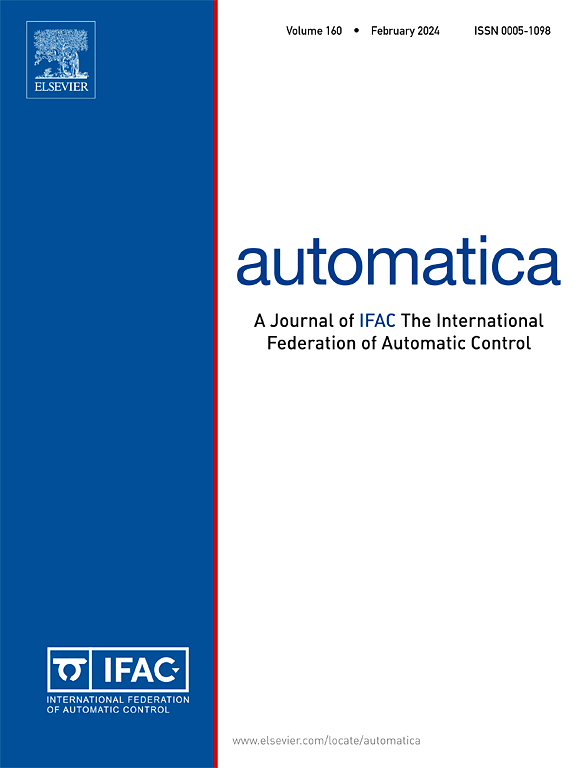代理控制屏障功能:集成基于屏障和基于lyapunov的安全关键控制设计
IF 4.8
2区 计算机科学
Q1 AUTOMATION & CONTROL SYSTEMS
引用次数: 0
摘要
这项工作介绍了一种新的代理控制屏障函数(PCBF)方案,该方案集成了基于屏障和基于lyapunov的安全关键控制策略,用于具有潜在未知动态的严格反馈系统。该方法采用模块化设计方法,将原系统分解为一个代理子系统和一个虚拟跟踪子系统,分别由基于控制屏障函数(CBF)和基于lyapunov的控制器控制。通过集成这些单独设计的控制器,保证了整个系统的安全性。此外,利用一种新的基于滤波器的扰动观测器设计了一种基于pcbf的非匹配扰动严格反馈系统的安全控制器。这种方法扩大了基于CBF的方法可以应用的系统类别,并且通过只需要代理子系统的模型显著地简化了CBF的构建。通过数值仿真验证了该方法的有效性。本文章由计算机程序翻译,如有差异,请以英文原文为准。
Proxy control barrier functions: Integrating barrier-based and Lyapunov-based safety-critical control design
This work introduces a novel Proxy Control Barrier Function (PCBF) scheme that integrates barrier-based and Lyapunov-based safety-critical control strategies for strict-feedback systems with potentially unknown dynamics. The proposed method employs a modular design procedure, decomposing the original system into a proxy subsystem and a virtual tracking subsystem that are controlled by the control barrier function (CBF)-based and Lyapunov-based controllers, respectively. By integrating these separately designed controllers, the overall system’s safety is ensured. Moreover, a new filter-based disturbance observer is utilized to design a PCBF-based safe controller for strict-feedback systems subject to mismatched disturbances. This approach broadens the class of systems to which CBF-based methods can be applied and significantly simplifies CBF construction by requiring only the model of the proxy subsystem. The effectiveness of the proposed method is demonstrated through numerical simulations.
求助全文
通过发布文献求助,成功后即可免费获取论文全文。
去求助
来源期刊

Automatica
工程技术-工程:电子与电气
CiteScore
10.70
自引率
7.80%
发文量
617
审稿时长
5 months
期刊介绍:
Automatica is a leading archival publication in the field of systems and control. The field encompasses today a broad set of areas and topics, and is thriving not only within itself but also in terms of its impact on other fields, such as communications, computers, biology, energy and economics. Since its inception in 1963, Automatica has kept abreast with the evolution of the field over the years, and has emerged as a leading publication driving the trends in the field.
After being founded in 1963, Automatica became a journal of the International Federation of Automatic Control (IFAC) in 1969. It features a characteristic blend of theoretical and applied papers of archival, lasting value, reporting cutting edge research results by authors across the globe. It features articles in distinct categories, including regular, brief and survey papers, technical communiqués, correspondence items, as well as reviews on published books of interest to the readership. It occasionally publishes special issues on emerging new topics or established mature topics of interest to a broad audience.
Automatica solicits original high-quality contributions in all the categories listed above, and in all areas of systems and control interpreted in a broad sense and evolving constantly. They may be submitted directly to a subject editor or to the Editor-in-Chief if not sure about the subject area. Editorial procedures in place assure careful, fair, and prompt handling of all submitted articles. Accepted papers appear in the journal in the shortest time feasible given production time constraints.
 求助内容:
求助内容: 应助结果提醒方式:
应助结果提醒方式:


